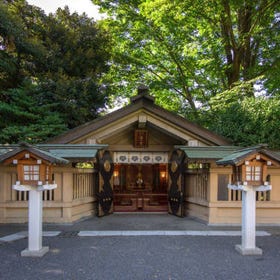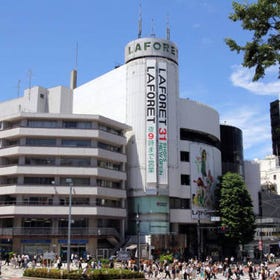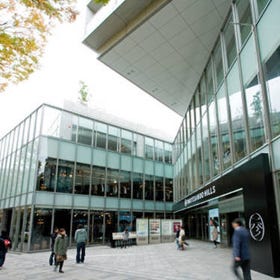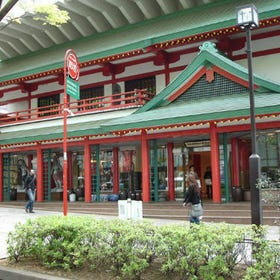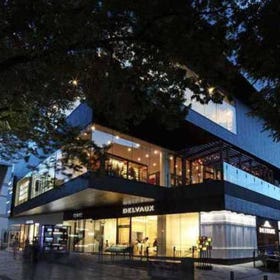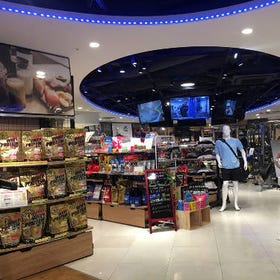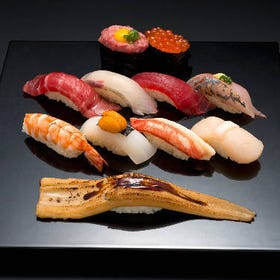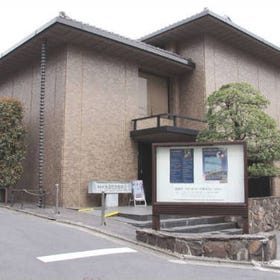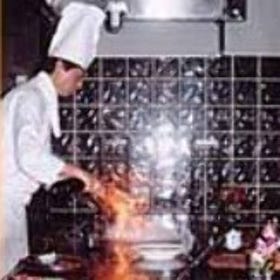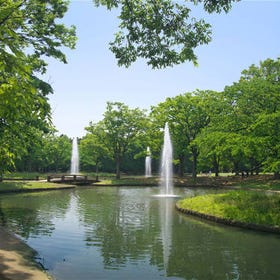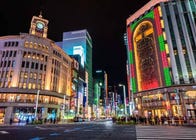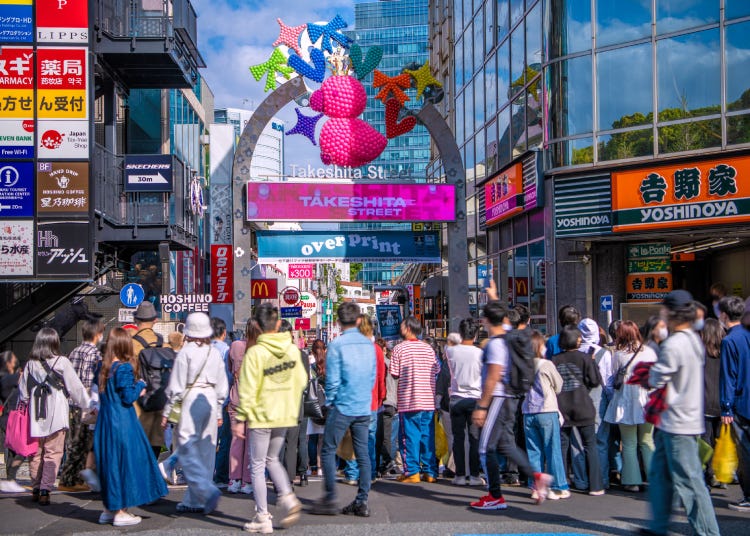
Harajuku is one of the most fashion-forward areas of Tokyo, well-known for its youth culture and cutting-edge trends. With it's free, open-minded attitude towards all kinds of fashion and dozens of unique shops abound, it has become a super-popular tourist hotspot.
Here we'll dive into the unique and cutting-edge spots for food, shopping, and sightseeing, all within this world-famous fashion destination of Harajuku. Let's find out why it's so popular with tourists and locals alike!
(Main image: PIXTA)
Harajuku: The Birthplace of Kawaii Culture, and Luxurious Omotesando
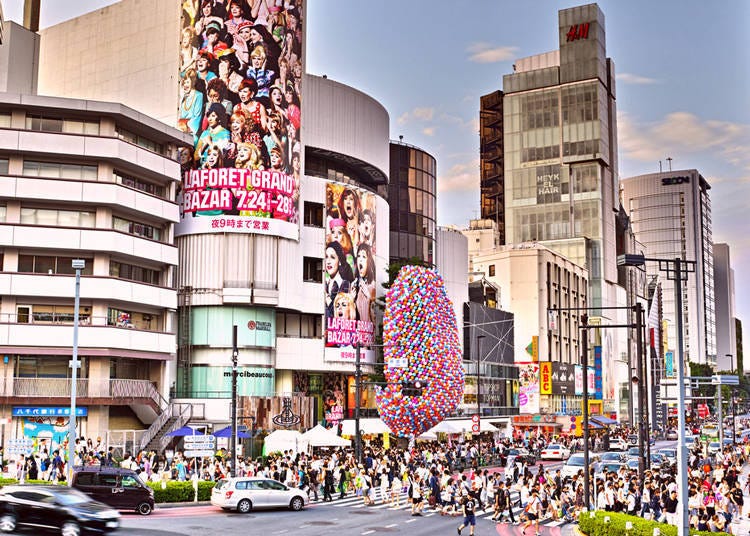
When you think about Harajuku, the image that probably comes to mind is that of "kawaii culture," and all of the young people that are so crazy about it. If you don't know what that is, you'll find out pretty quickly in Harajuku, but kawaii essentially means cute, but a special, Japanese type of cute!
Takeshita-dori is the most popular spot, known for low-priced clothing and various kawaii goods. However, it is also the most crowded spot, and regularly attracts swarms of teenage kawaii-culture aficionados. Yet Takeshita-dori offers more than just cute clothes. It is also famous for their delicious sweets, with new sweets shops opening up one after another. Many people flock here for a taste of Harajuku's famous crepes and pancakes.
Harajuku holds a special place in the hearts of visitors from abroad as well. It's home to plenty of young people sporting unique fashion trends that you are unlikely to see in other cities. For example, lolita fashion (*based on Victorian and Rococo fashion styles and NOT the controversial novel) is identified by tons of frills and lace, just like a doll's clothing. The gothic counterpart, or "gothic-lolita" fashion is based on a similar concept, but incorporates gothic elements and mostly black undertones.
Finally, we can't forget cosplay, the style based on dressing up as your favorite anime characters. These are only some of the many trends you can find here, and only one of the reasons that tourists flock from overseas for a glimpse at the Harajuku fashion scene.
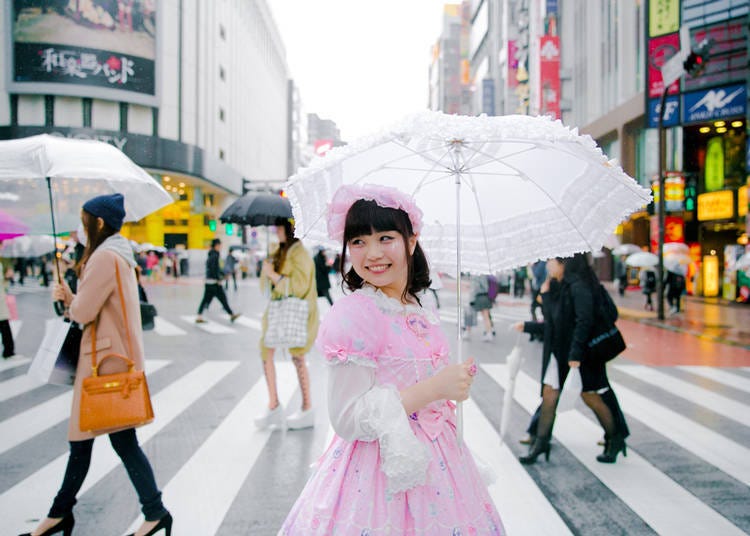
Oriental Bazaar is another shop geared towards tourists, and is a remnant of a former military complex called Washington Heights. Kiddy Land, on the other hand, is a character and miscellaneous goods shop, and a tourist hot-spot in its own right.
Continuing on towards the Aoyama area you will come to Omotesando, a more calm and adult-oriented extension of Harajuku. Here you will find famous brand shops, popular general stores, and cafes, all contributing to the atmosphere of style and luxury that Omotesando is best known for.
One of the main attractions of the Harajuku area is the varied atmosphere that changes depending on which part you visit, from the backstreets of Ura-Harajuku Cat Street, to Meiji Jingu Shrine and Yoyogi Park, the oasis of the city.
In addition to these various atmospheres you will find as you stroll through Harajuku, you can also find a variety of gourmet and shopping spots. There are so many cute things to see, you'll find your Instagram page filling up!
Features and Recommendations of Each Area in Harajuku
Harajuku is divided into several areas, including Takeshita-dori Street, Omotesando, and Ura-Harajuku Cat Street, each of which has its own unique appeal. Meiji Jingu Shrine is a famous power spot for tourists who want to experience the history of Japan, and Yoyogi Park is an oasis in the middle of the city.
Kawaii Takeshita-dori: The Fashion Street Popular with Young Girls
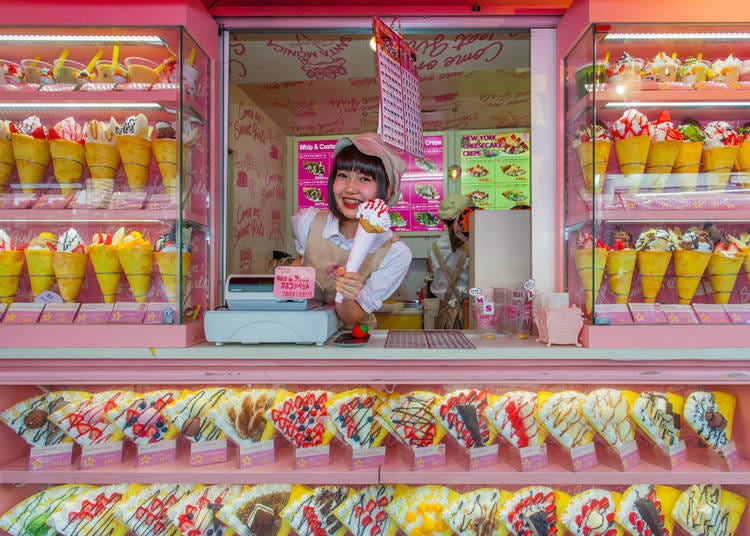
Takeshita-dori is a fashion street that runs from JR Harajuku Station, Takeshita Exit, to the intersection of Meiji-dori Street. It is a 360-meter-long stretch of popular shops and girls in cute outfits. Because of the largely teenage customer base, many of these shops specialize in affordable items that cater to their young hearts, from cutting-edge clothing to a wide array of goods and sweets.
Takeshita-Dori, the center for "kawaii culture," is exciting enough just to wander around. But, if all the walking makes you hungry, grab some take-out crepes and other delicious sweets to replenish yourself.
The Iconic Zelkova Trees and Omotesando Avenue's High-Class Shops
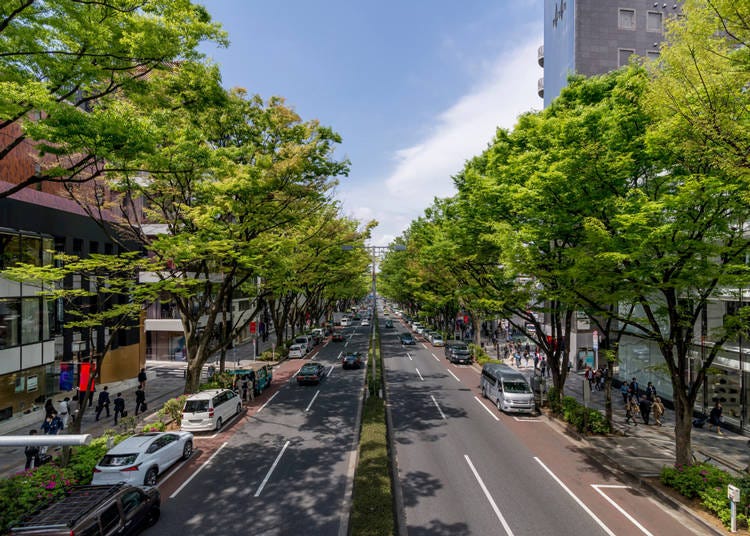
Omotesando is the wide avenue connecting Harajuku and Aoyama, leading to Meiji Jingu Shrine. When you think about Omotesando, one of the first images that may come to mind is the symbolic stretch of zelkova trees lining the avenue. In the wintertime, the scene becomes romantic with illuminations of bright, champagne-gold lights decorating the trees. On either side of the sloping street are popular luxury brand shops and cafes, centered on the stylish yet calming landmark that is Omotesando Hills.
Hunting for Treasure in Ura-Harajuku Cat Street's Unique Shops
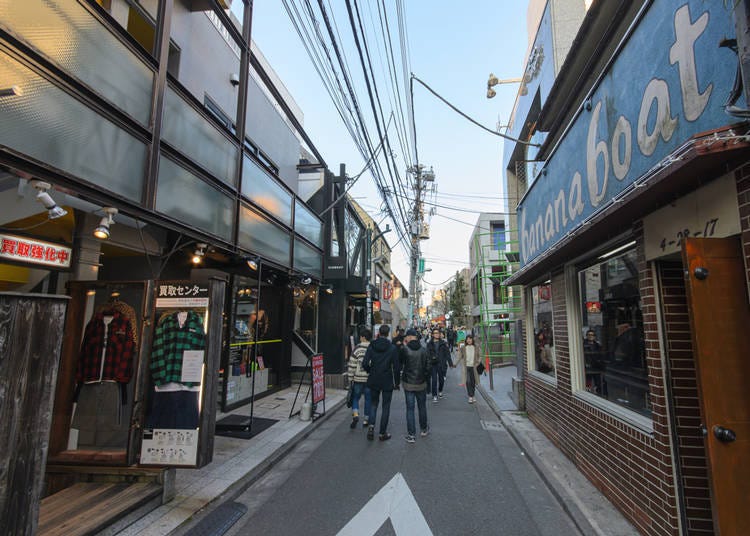
If you walk through Takeshita-dori from Harajuku Station and cross Meiji-dori, you will find an area made up of narrow alleys. This is the famous Ura-Harajuku area, also known as "the backstreets of Harajuku." It got its name from the shops that expanded from Takeshita-dori into the deeper streets hidden behind. Amongst these streets is the promenade, popularly referred to as “Cat Street," which is also lined with many select shops full of unique and interesting items.
Originally a quiet residential area, you won't find as many people walking these alleys compared to the main street. There are plenty of hidden restaurants and shops quietly nestled into the old buildings of the alley, making it an excellent spot to explore.
An Urban Oasis! Famous Power-Spot Meiji Jingu Shrine and Nature-Rich Yoyogi Park
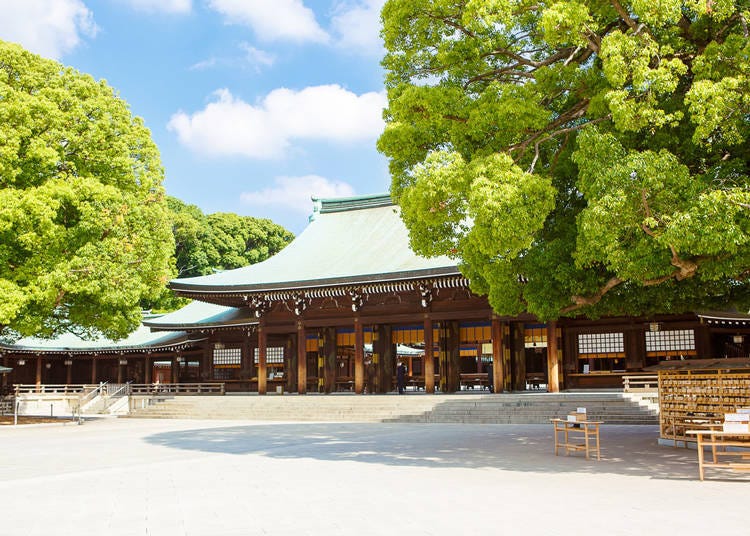
You will come upon a large, wooden torii gate about 3 minutes from JR Harajuku Station's Omotesando Exit. This is the site of Meiji Jingu. Pass through the Torii gate, one of the largest in Japan, and walk for about 10 minutes, and you will reach the Main Hall. Meiji Jingu Shrine was established in 1920 and dedicated to Emperor Meiji and Empress Shoken. There are over 200,000 trees planted in the spacious precincts, creating an atmosphere of tranquility one wouldn't expect to find in such a busy city.
After paying your respects at the Meiji Jingu Shrine, head to the neighboring Yoyogi Park. Once used as a former US military training ground and the site of the military complex Washington Heights, as well as the Tokyo Olympics Village for athletes, Yoyogi Park has now become an urban oasis where people can relax surrounded by water and trees. In addition to outdoor stages where various events are held, there are stadiums, soccer fields, and cycling and running tracks that can be enjoyed by adults and children as well.
Getting to Harajuku
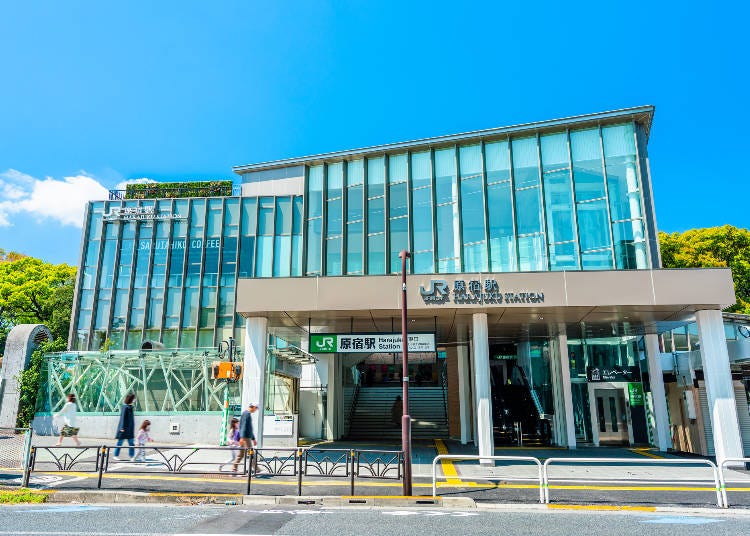
There are several ways to get to Harajuku. The JR Yamanote Line takes you to Harajuku Station. If riding the Tokyo Metro, you can get off at Meiji Jingumae Station or Omotesando Station, either of which are the most convenient stops to get directly to the Omotesando area. Harajuku Station's Takeshita Exit, another symbol of Harajuku, will bring you to the front of Takeshita-dori. If you have the time, walking through Takeshita-Dori to Omotesando is recommended to explore Ura-Harajuku and Cat Street along the way. Harajuku Station is only 6 minutes away from Shinjuku Station via the JR Yamanote Line and about 27 minutes from Tokyo Station. At Meiji Jingumae Station, there are many more exits, so be sure to check which is closest to your destination in advance.
The atmosphere of Harajuku tends to vary by area, from Takeshita Street and Ura-Harajuku to Omotesando and from Meiji Jingu Shrine to Yoyogi Park. The impression of Harajuku may be that of a youthful city. However, you will surely find calm and sophisticated spots as well. If you find yourself in one of these areas for gourmet and shopping, take a moment to appreciate this part of Japanese culture that exists only in Harajuku.
*Prices and options mentioned are subject to change.
*Unless stated otherwise, all prices include tax.
Popular Tours & Activitiess
Recommended places for you
-
Ad

(Opening in Jan 2026) 'THE SUMO LIVE RESTAURANT HIRAKUZA GINZA TOKYO!' 5 Exciting Ways to Experience the World of Sumo!
-

Jujutsu Kaisen Takes Over JR East With a Wrapped Shinkansen This Winter
by: Guest Contributor
-

How to Get Don Quijote's Exclusive 2025-2026 Winter Gift (+Tax-Free Savings)
-
Ad

Discover the "Miraculous Forest" in the Heart of Tokyo: The Institute for Nature Study (9 Minutes from JR Meguro Station)
-

Japan’s Shinkansen Is About to Change Travel in an Unexpected Way
by: Guest Contributor
-

This Winter, Godzilla Takes Over Haneda Airport
by: Guest Contributor
Inspiration for Accommodations
-

Enjoy Mt. Fuji from the Comfort of Your Room! Recommended Ryokan with Mt. Fuji View
-

Stay Near the Cherry Blossoms! Hotels for Cherry Blossom Viewing in Tokyo
-

Family-Friendly Hotels with Free Shuttle to Disneyland: Convenient Access for a Magical Stay
-

Top Ranked Hakone Hotels with Mt. Fuji View: Enjoy Stunning Scenery from Your Private Space
-

Convenient Tokyo Hotels with Airport Shuttle: Ideal for Families and Heavy Luggage
-

Stunning Tokyo Tower View Hotels: Enjoy Spectacular Scenery from Your Private Space
-

Convenient Asakusa Hotels with Kitchens: Ideal for Extended Family Visits
-

Experience Luxury: Hakone's 10 Best Five-Star Accommodations
-

Enjoy Mt. Fuji Autumn Leaves! Top Hotels Near the Popular Autumn Leaves Corridor
-

Experience Hakone Fall Foliage from Your Room with Stunning Views
-

Japan's Bath Culture: Tips You Should Know!
-

16 Secrets About Mt. Fuji, the Symbol of Japan: Even Japanese People Don’t Know That?!
-

10 Important Japanese Phrases to Know Before You Enter a Japanese Convenience Store!
by: Teni Wada
-

6 Popular Home Appliance Recommendations from BicCamera Staff
-

Mister Yakiniku: The Popular Yakiniku Spot for Lunch in Akihabara, With Takeout Available!
by: Naho Jishikyu
-

Extremely delicious Khao Man Gai (Thai chicken rice) in Tokyo
- #best ramen tokyo
- #what to buy in ameyoko
- #what to bring to japan
- #new years in tokyo
- #best izakaya shinjuku
- #things to do tokyo
- #japanese nail trends
- #what to do in odaiba
- #onsen tattoo friendly tokyo
- #daiso
- #best sushi ginza
- #japanese convenience store snacks
- #best yakiniku shibuya
- #japanese fashion culture
- #best japanese soft drinks
















